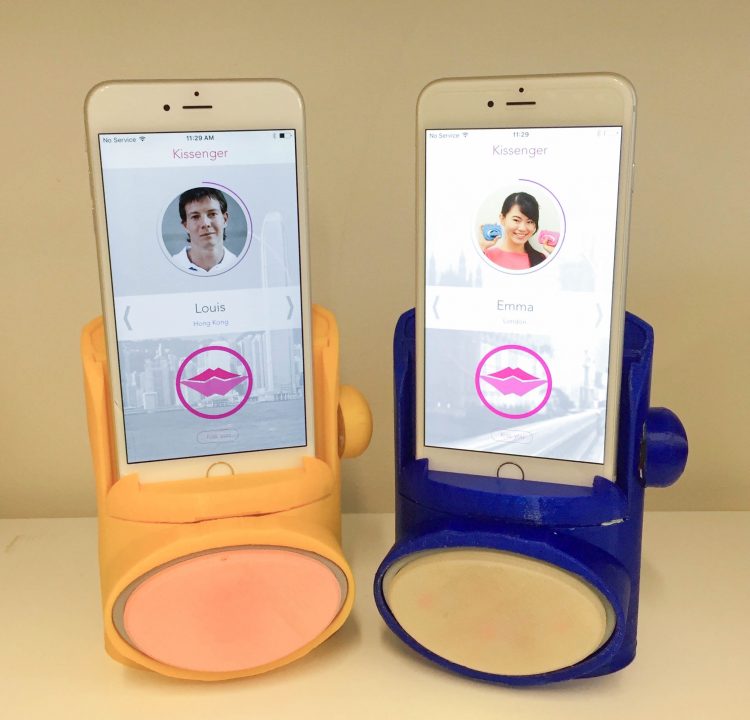Long distance relationships are always tough, and the lack of physical interaction is one of the main reasons for that. There’s no substituting human touch, yet, but rapidly-advancing technology already provides some intriguing alternatives. One such example is the Kissenger, a smartphone peripheral that allows users to kiss over long distances.
The concept of long-distance kissing has been an intriguing research concept for over half a decade now. Back in 2012, we wrote about the Kissenger, a solution created by Dr. Hooman Samani, Director of AIART Lab (Artificial Intelligence and Robotics Technology Laboratory) in Singapore. It consisted of two internet-connected bunny-shaped robots with big silicone lips that could send the touch of human lips between each-other to (sort of) simulate a kiss between two human beings. Samani described it as a “a physical interface enabling kiss communication”.
The Kissinger made international news headlines when it was originally revealed, but it never translated into an actual consumer product. However, the idea of transmitting human kisses over long distances remained popular, and, earlier this month, Emma Yann Zhang, a Computer Science PhD student at City University London, presented her own take on the idea, also called the Kissenger.








